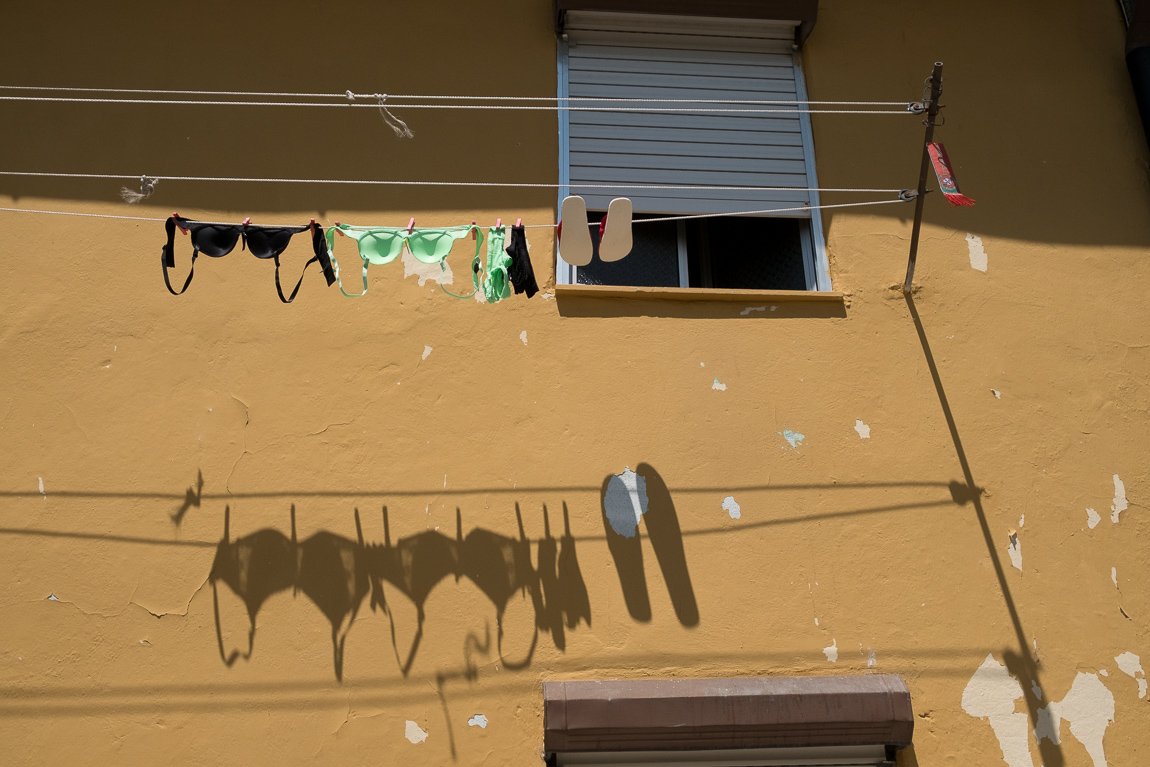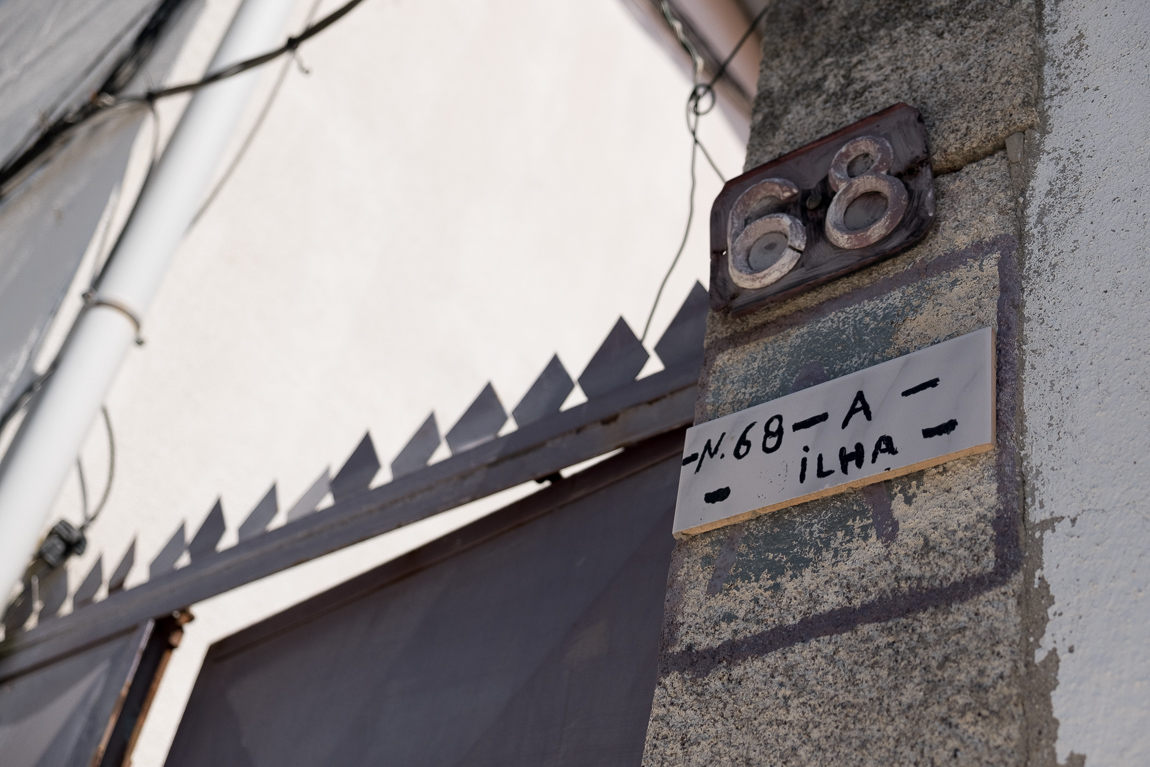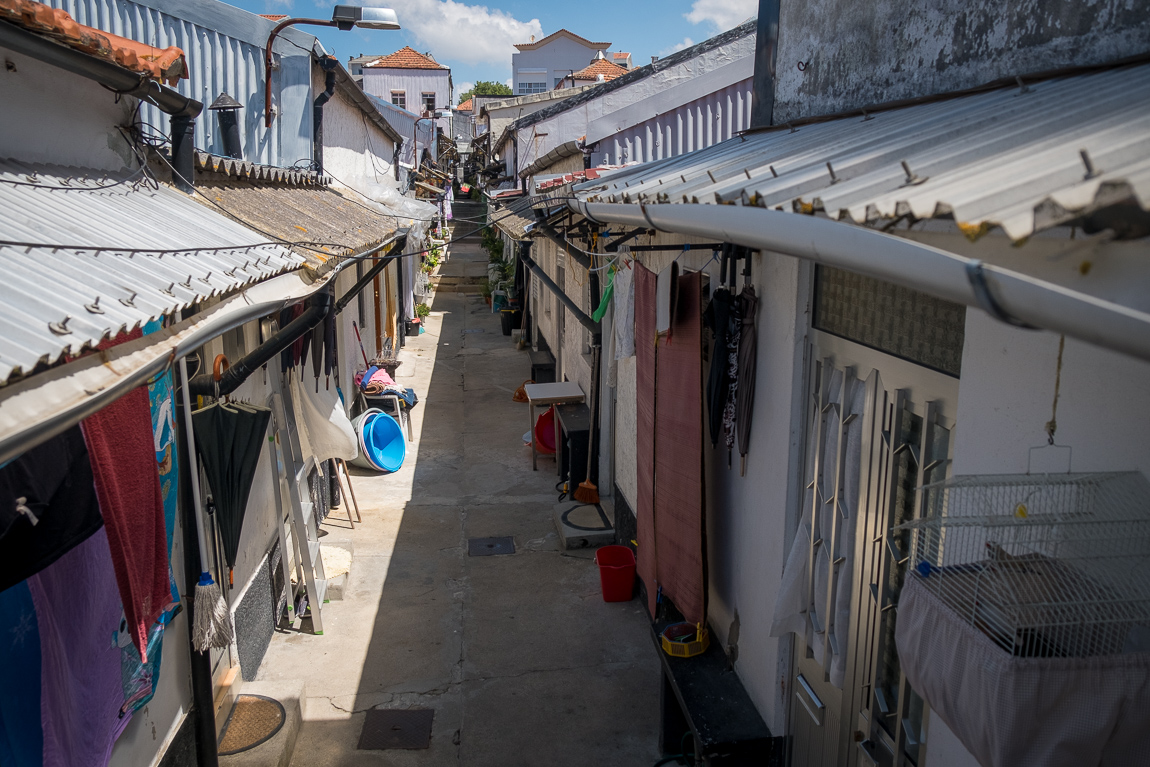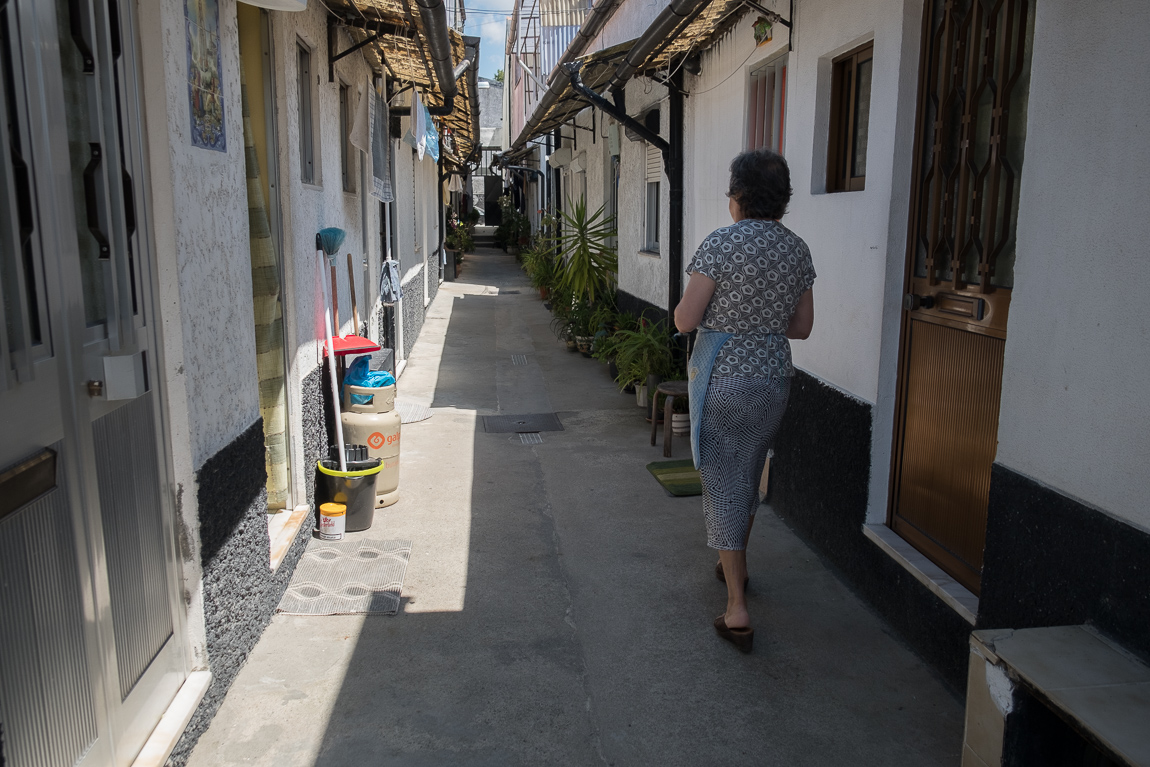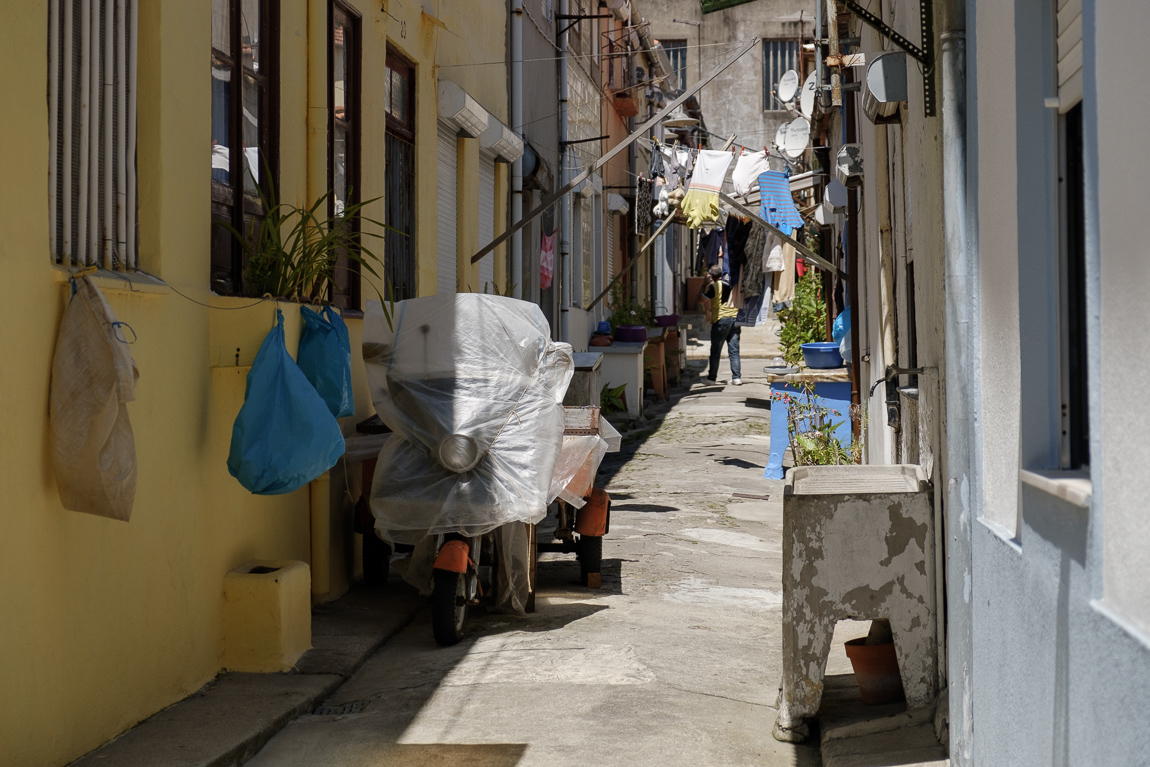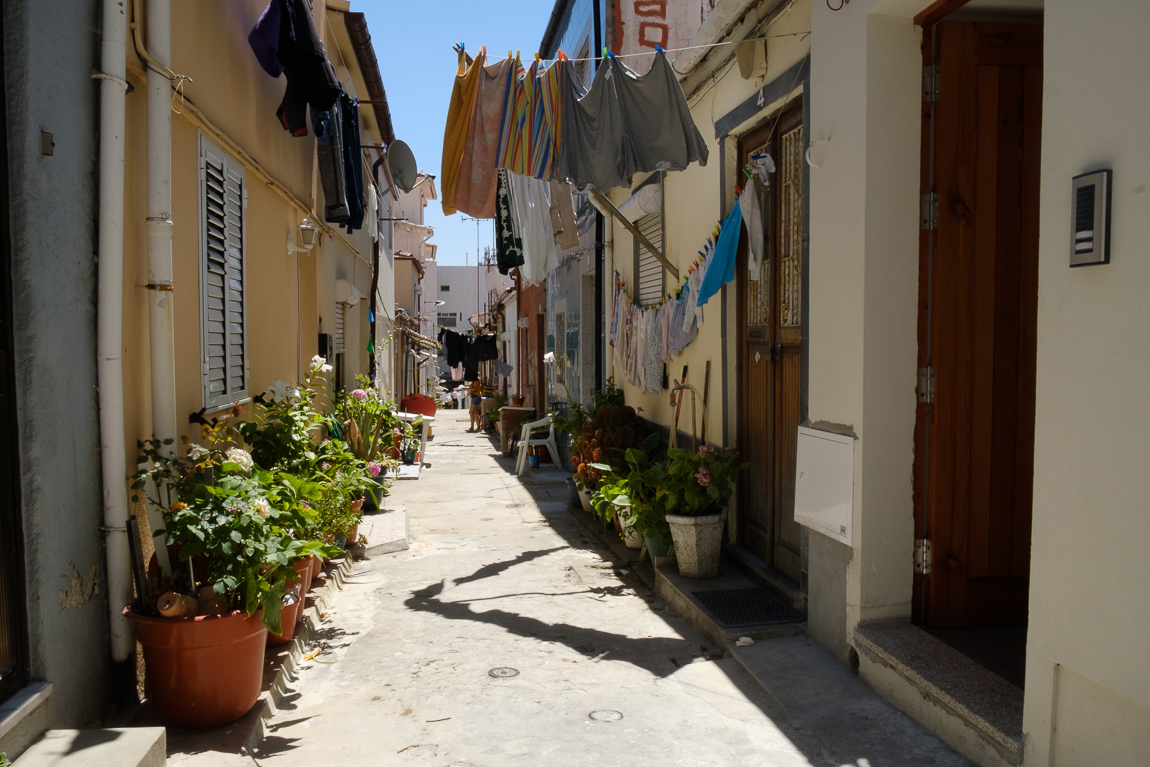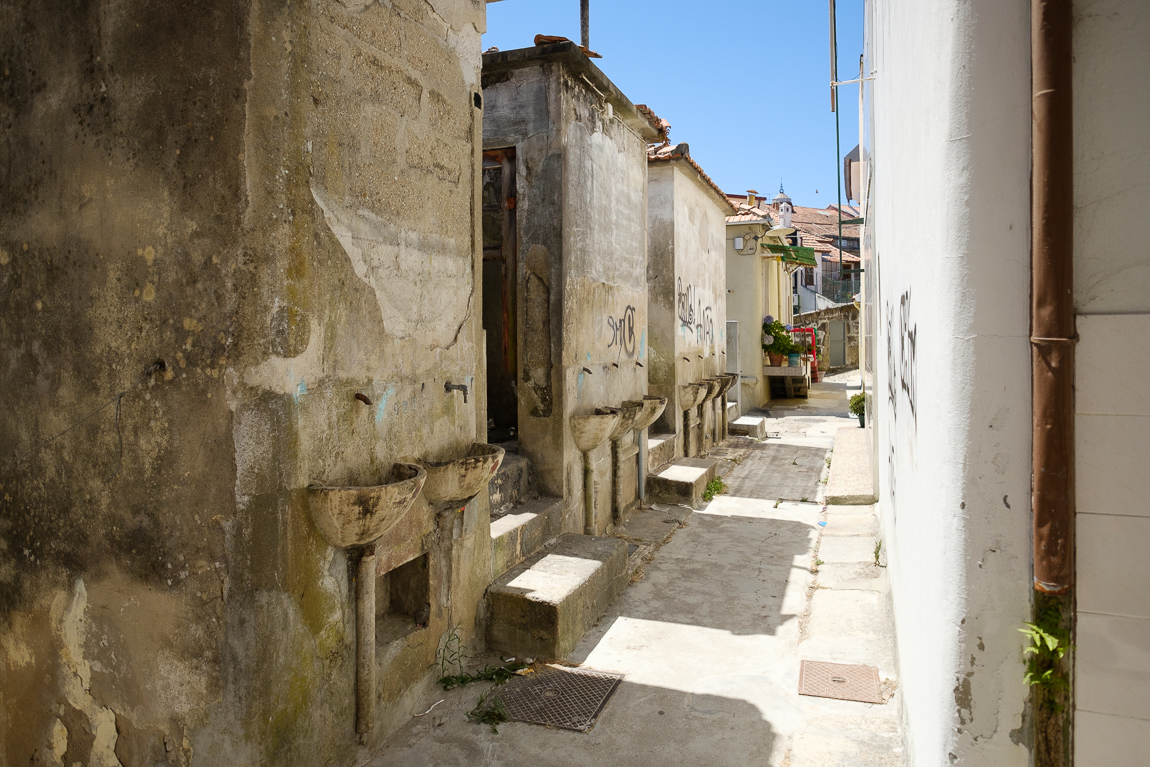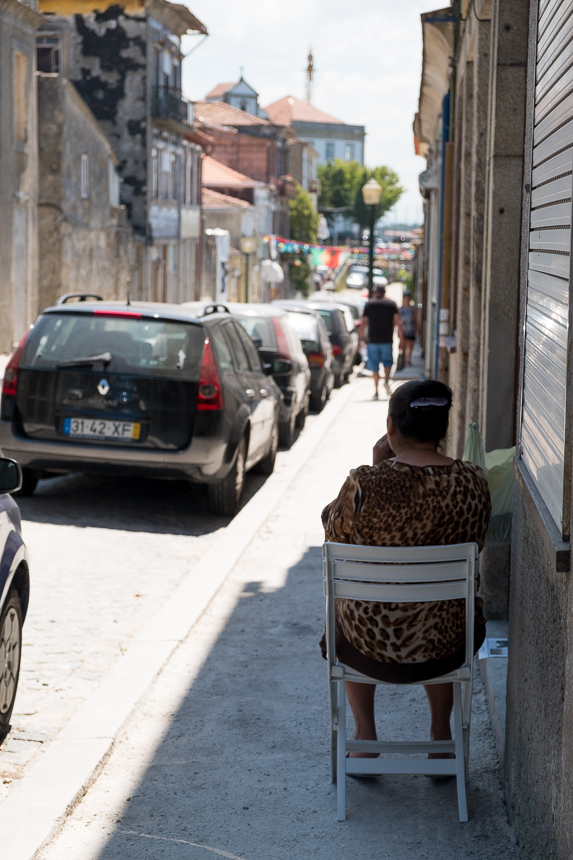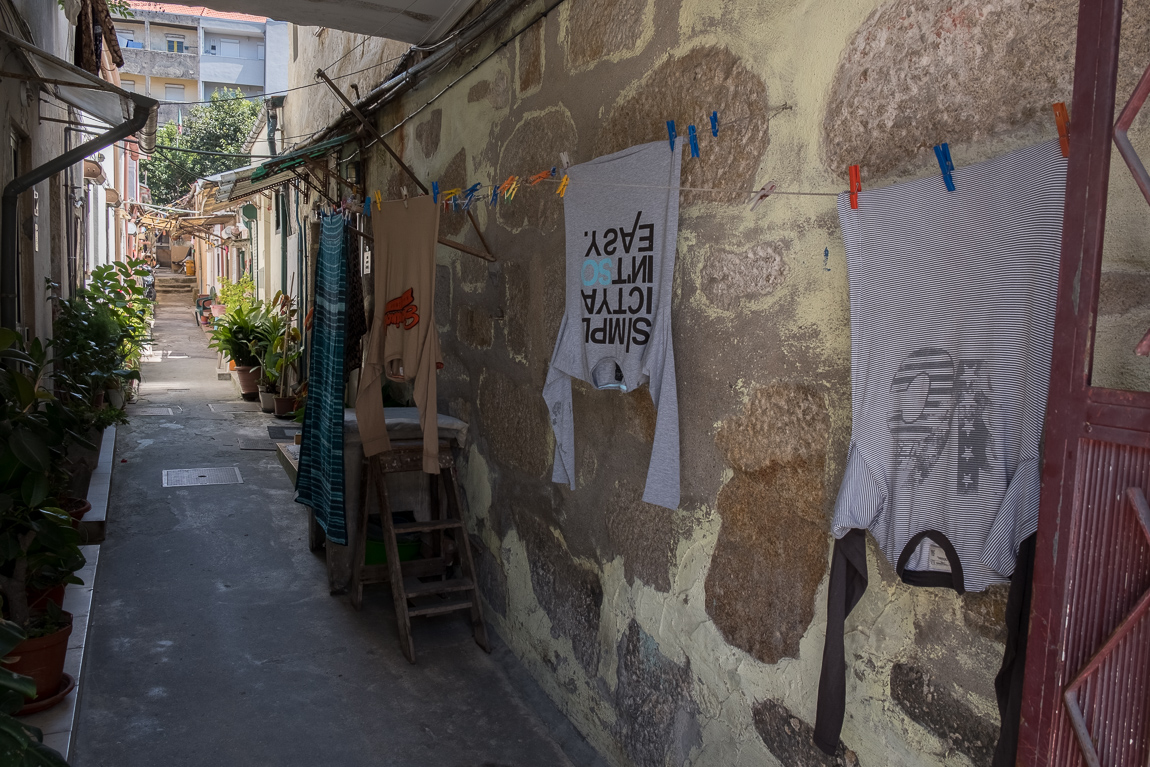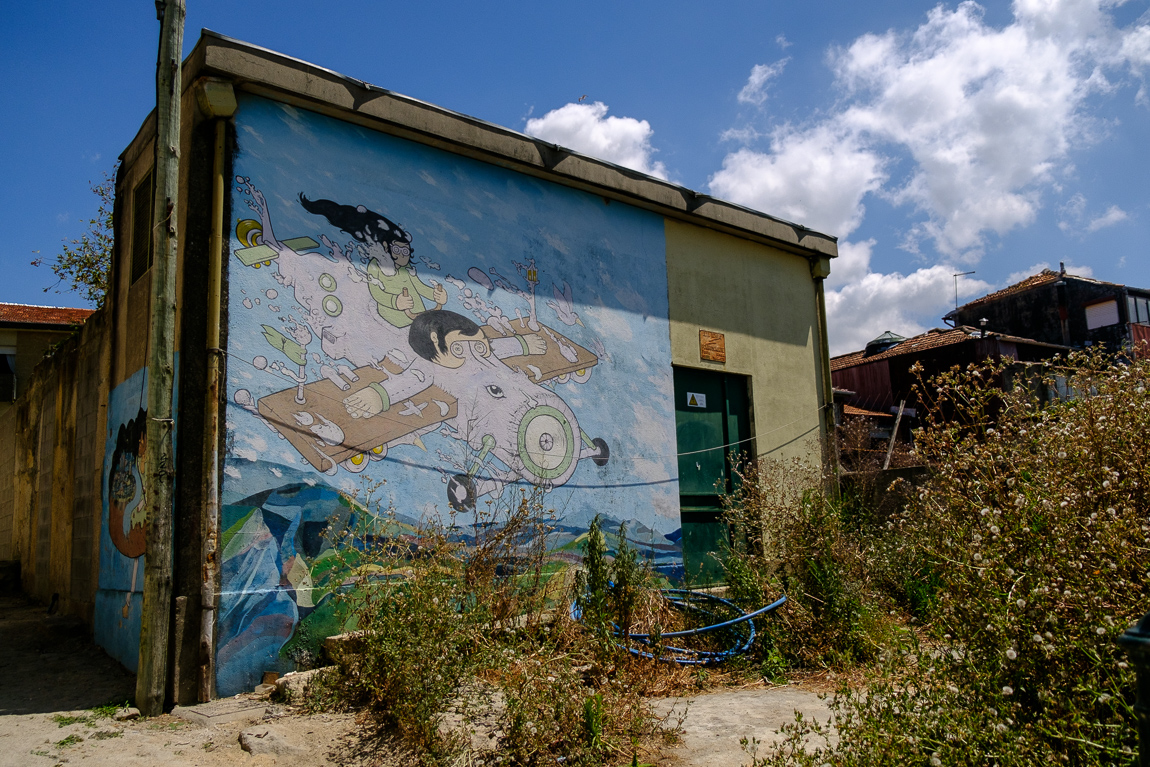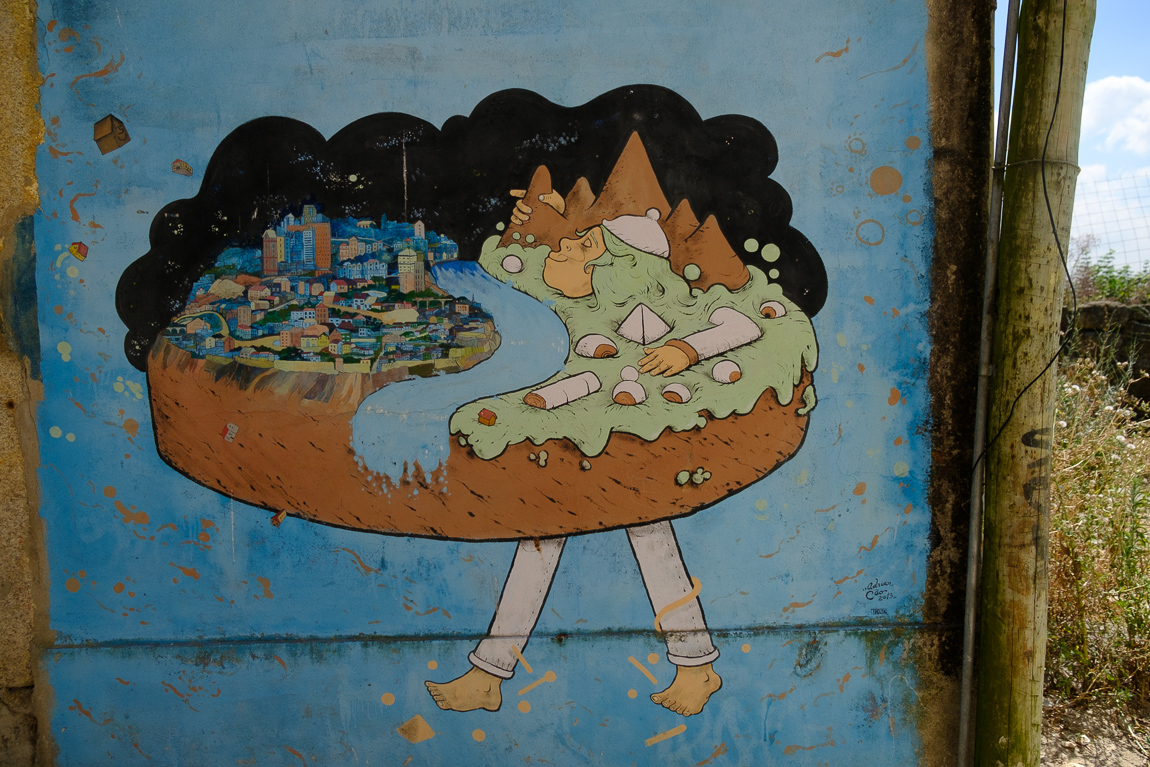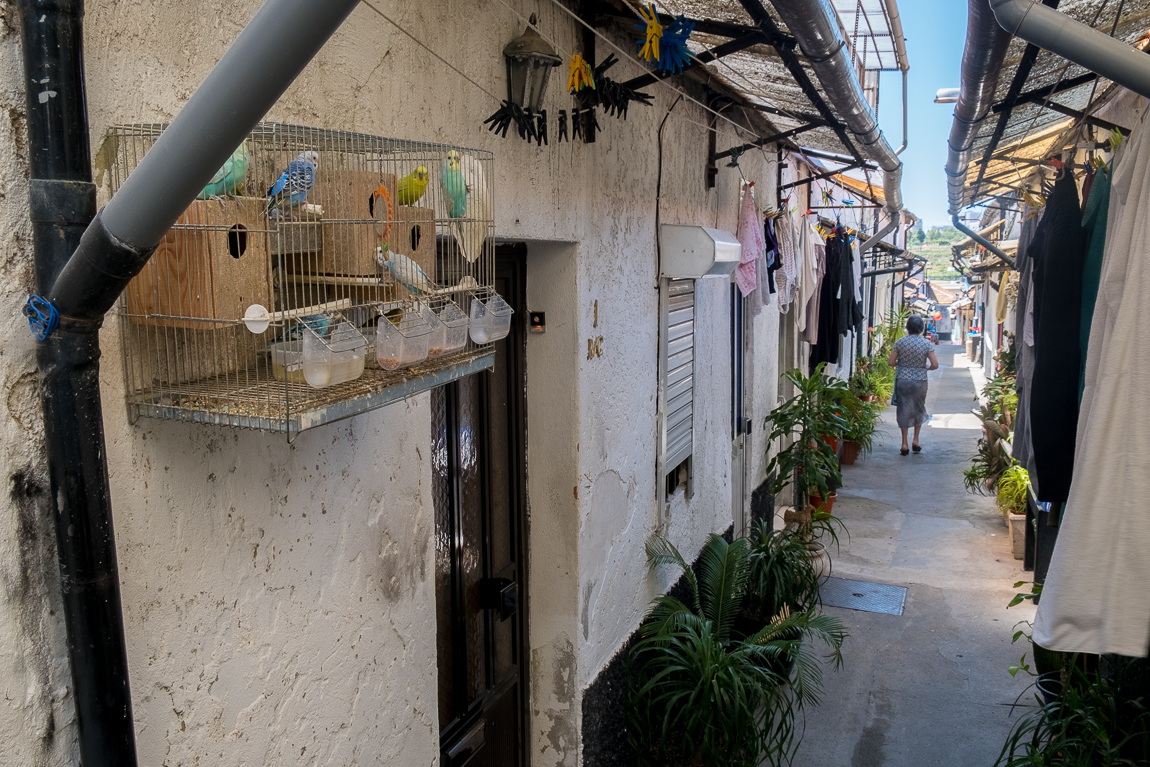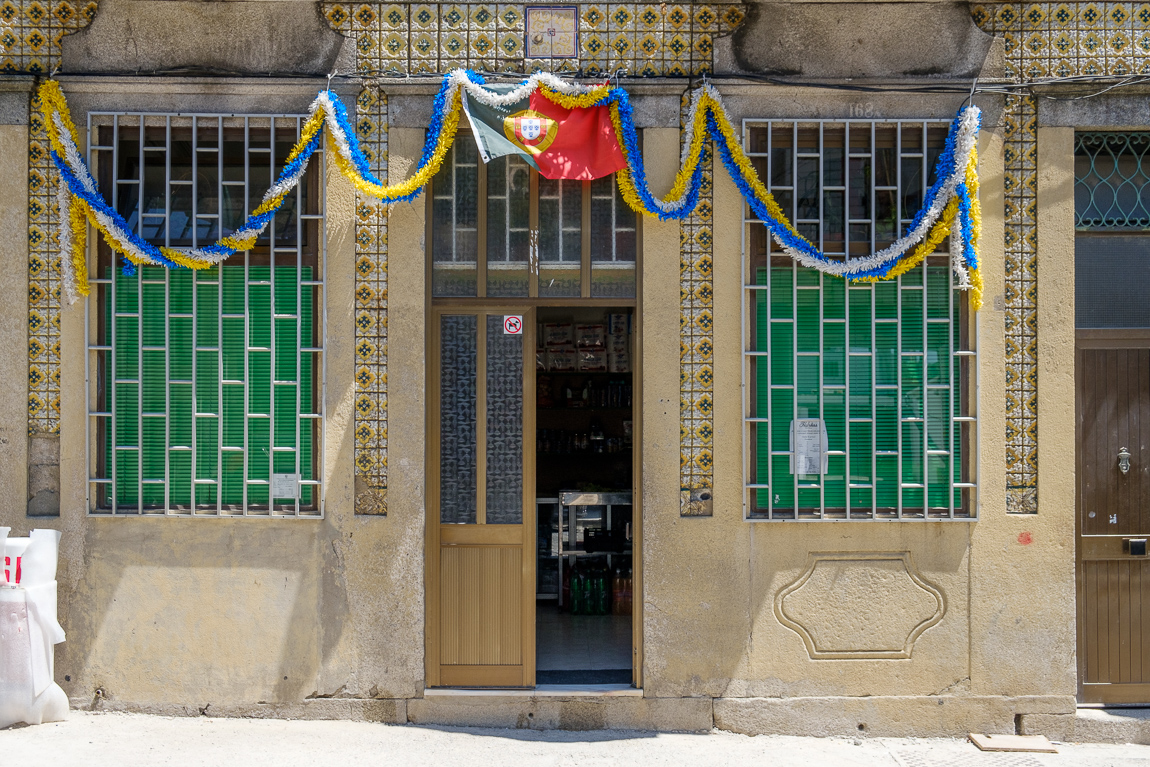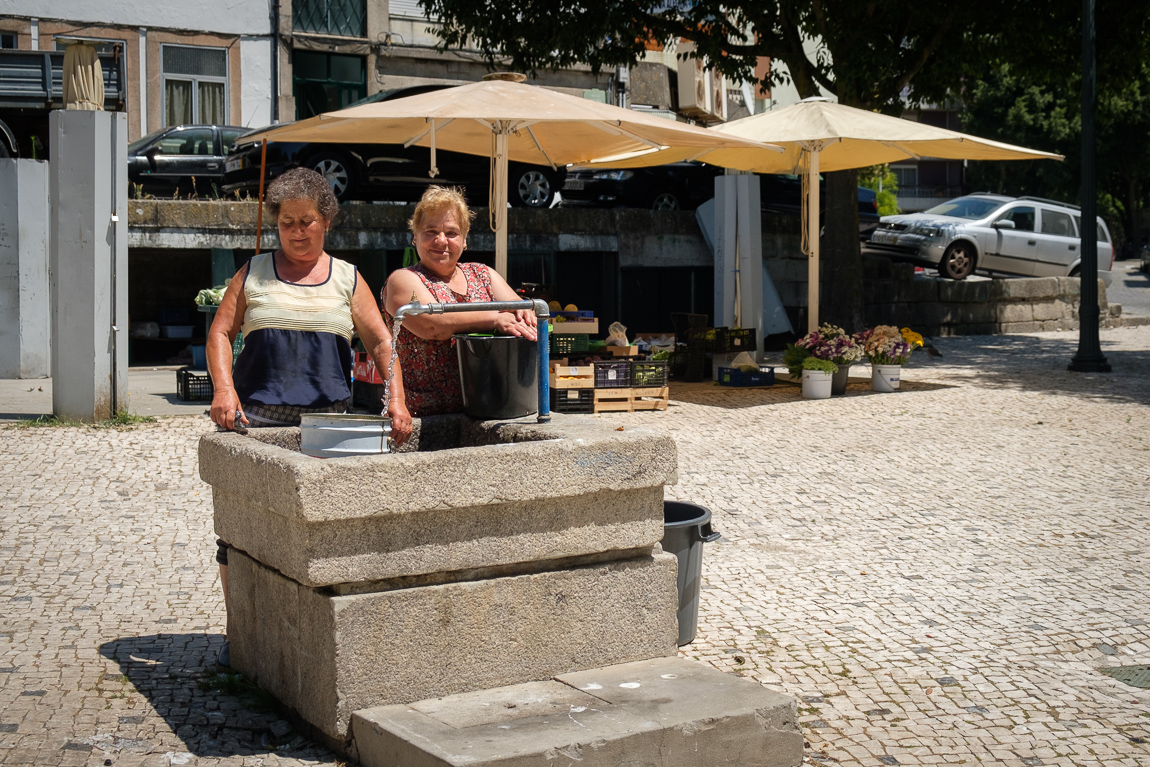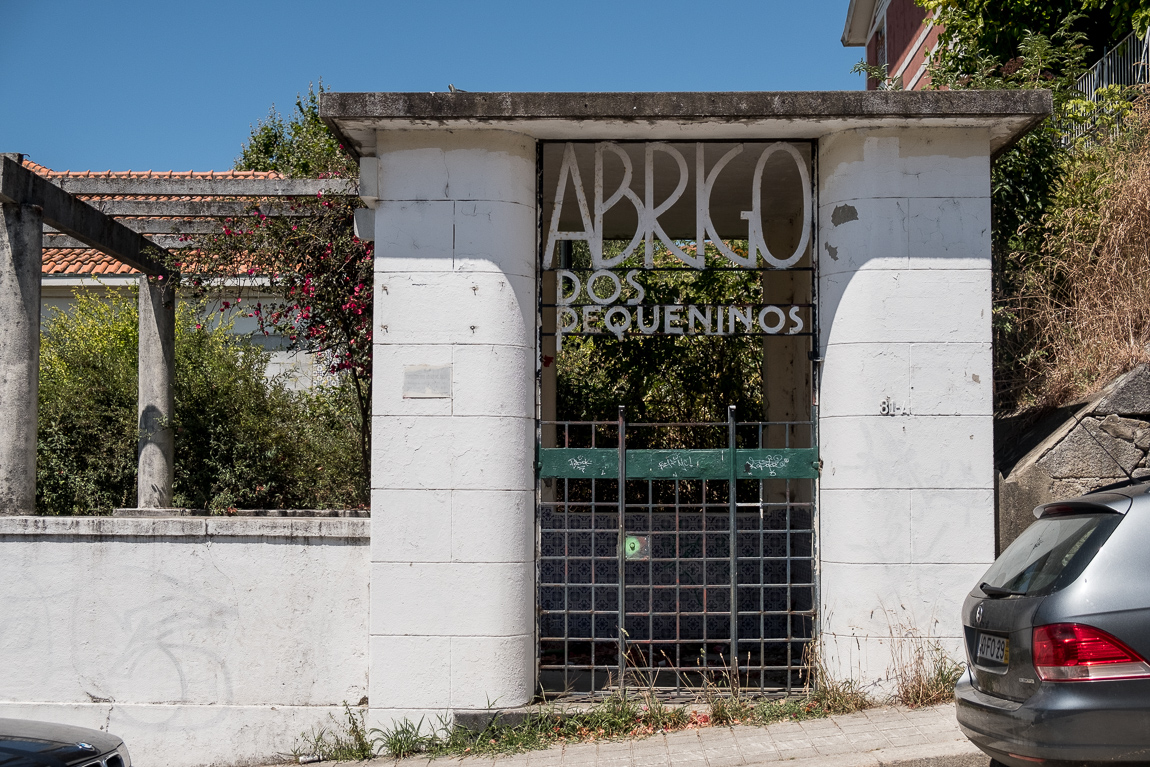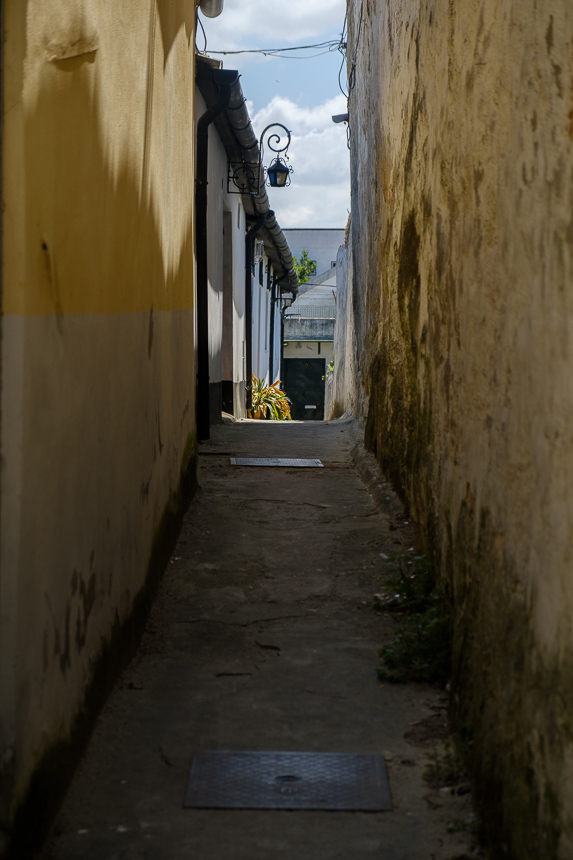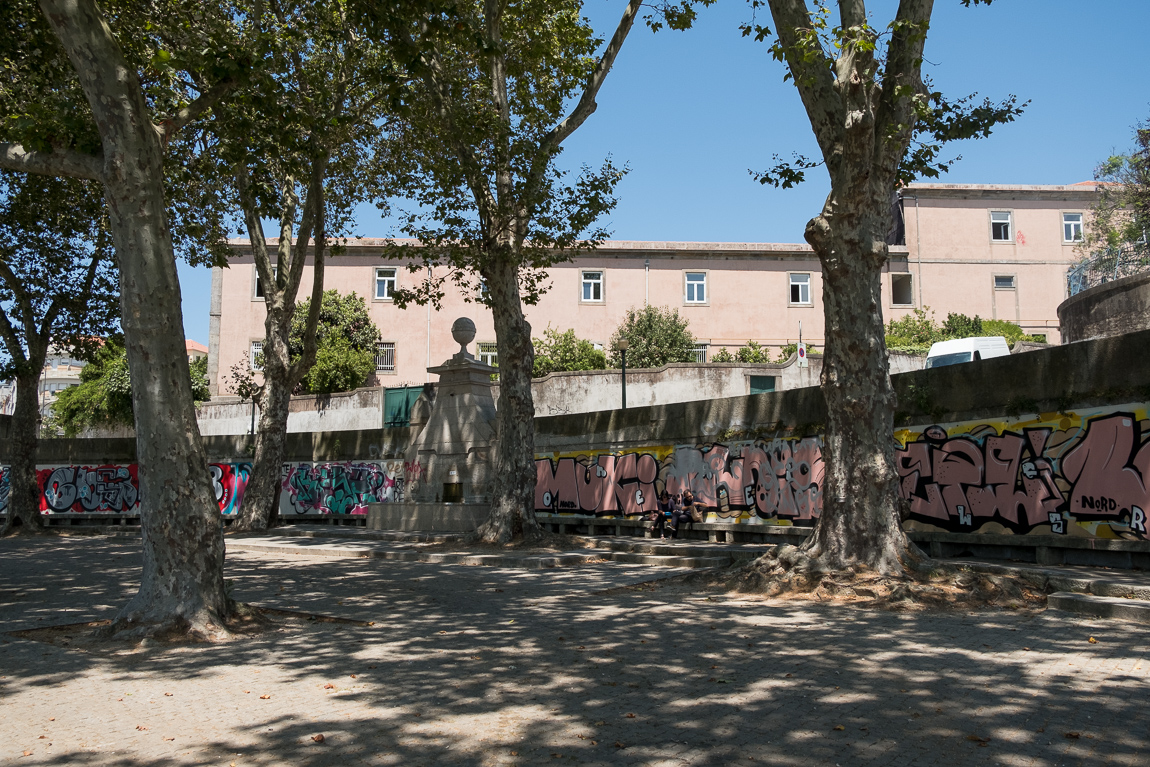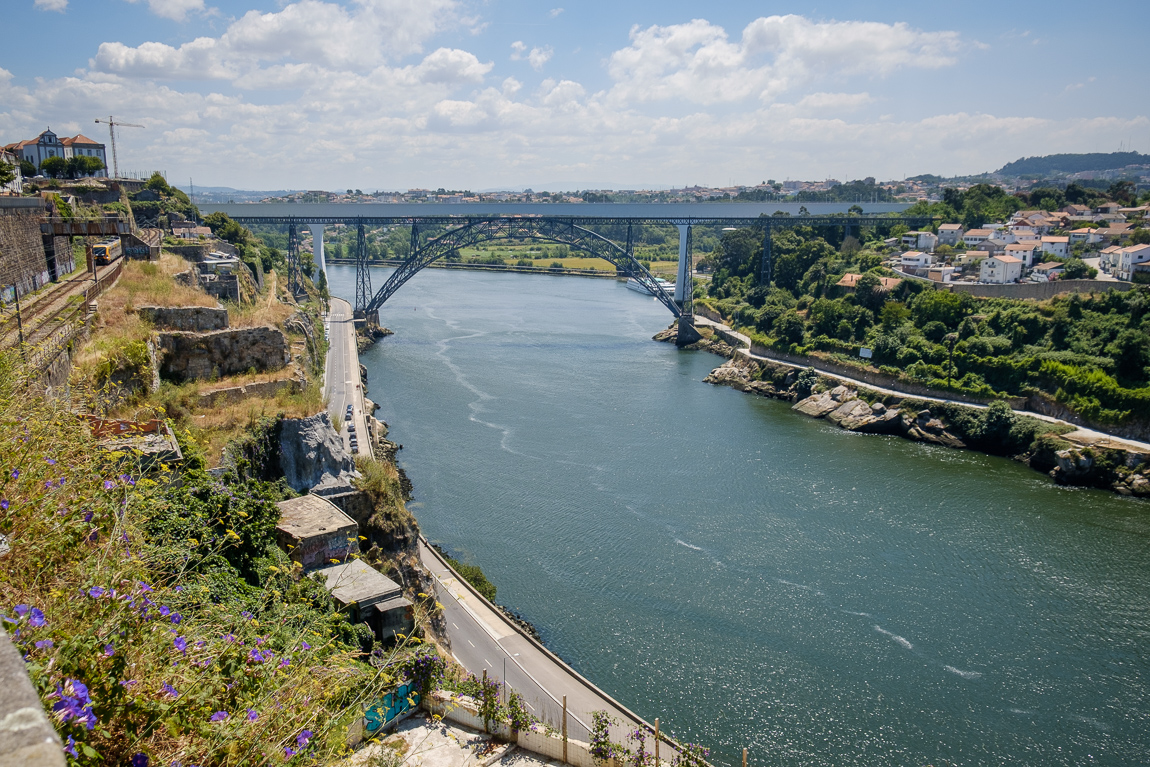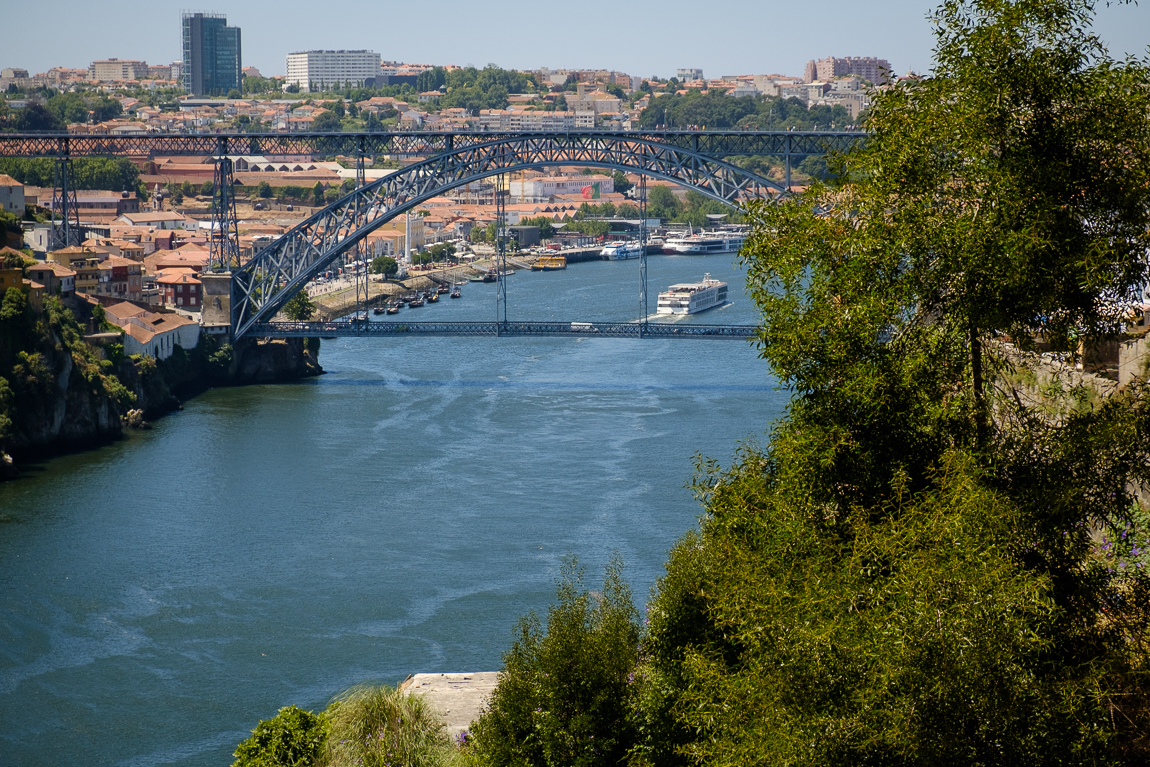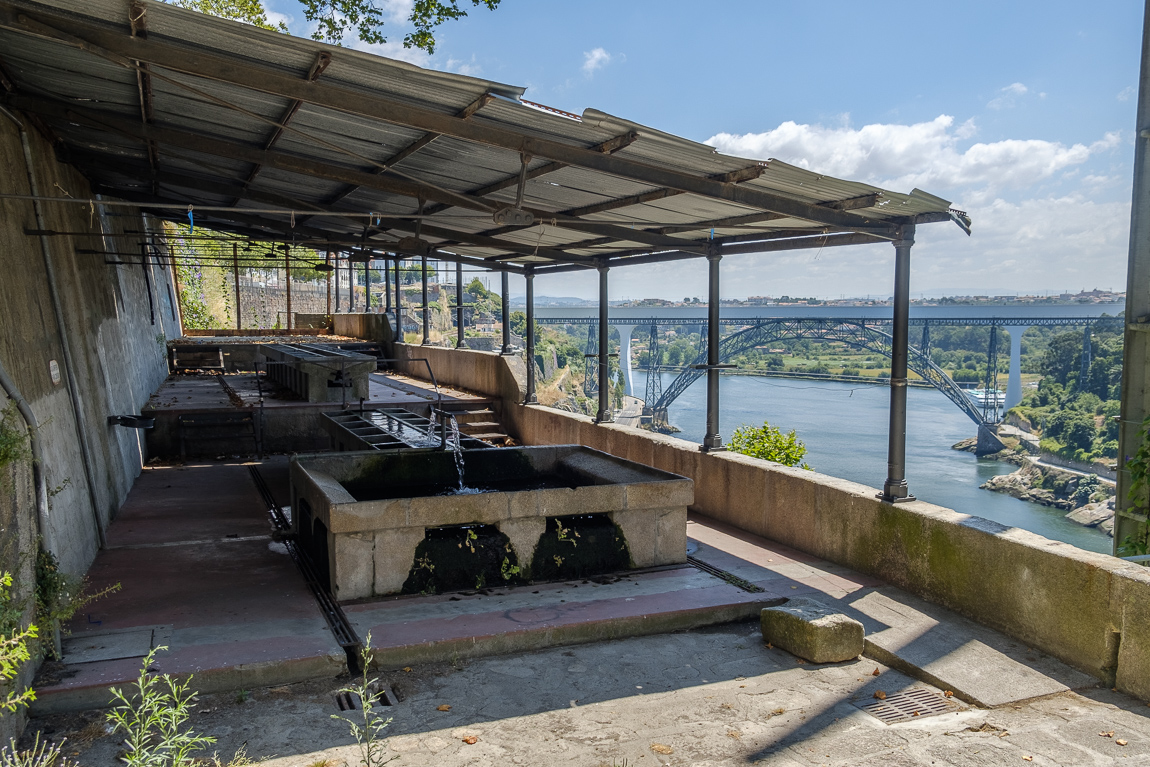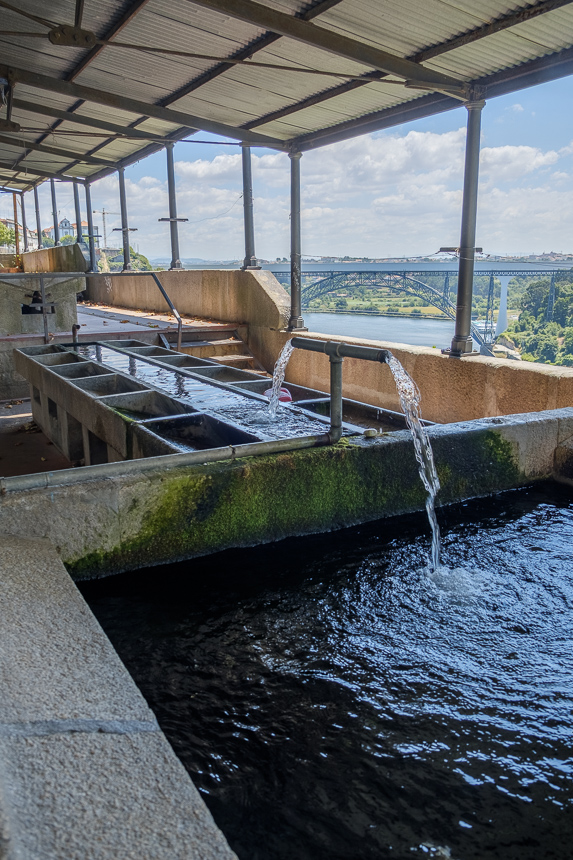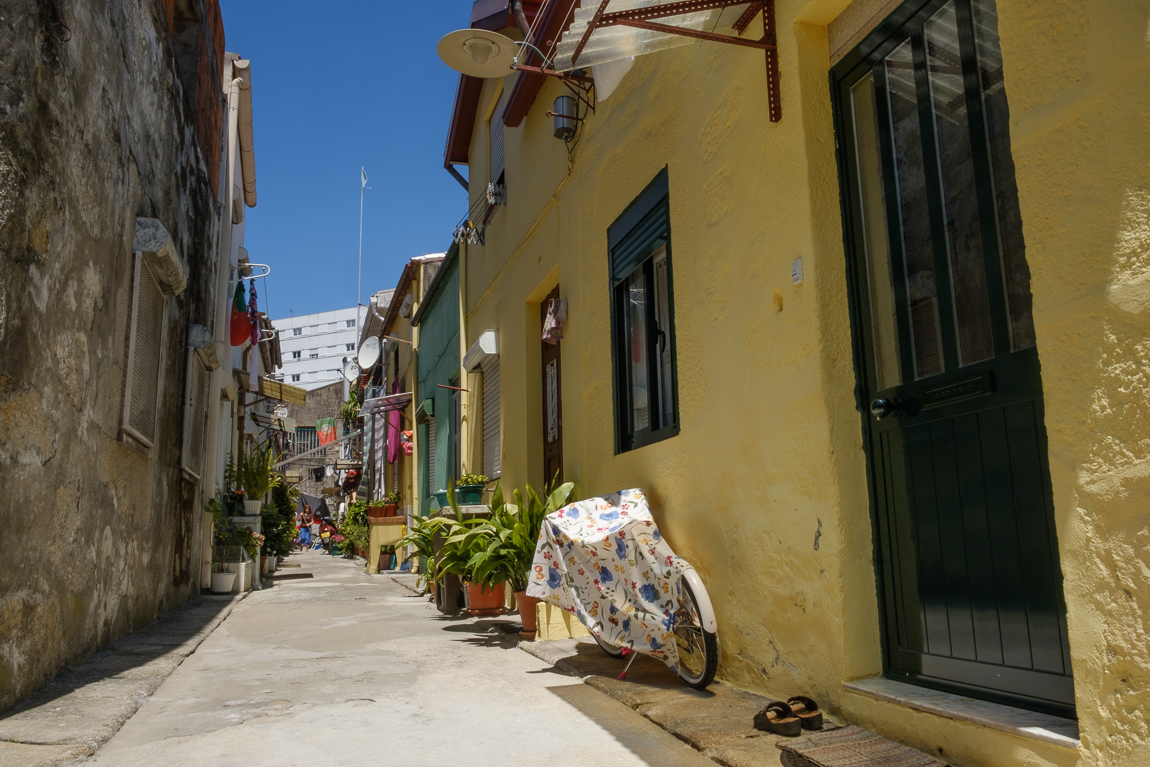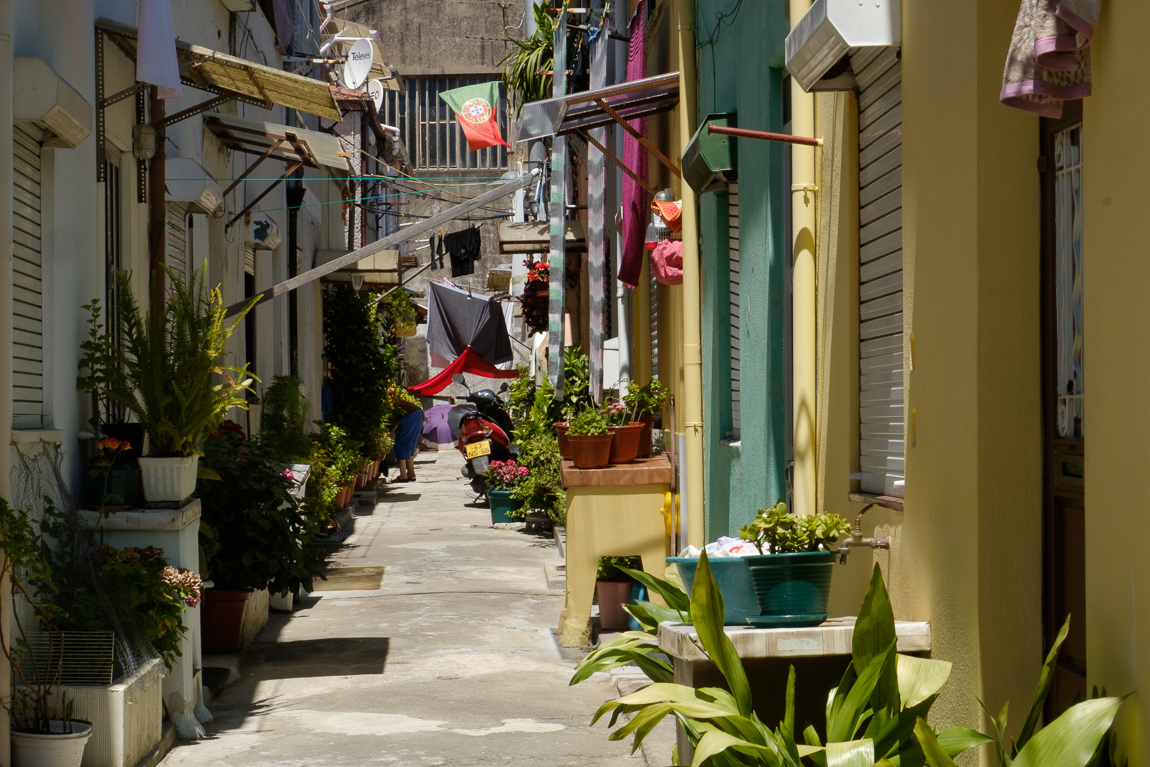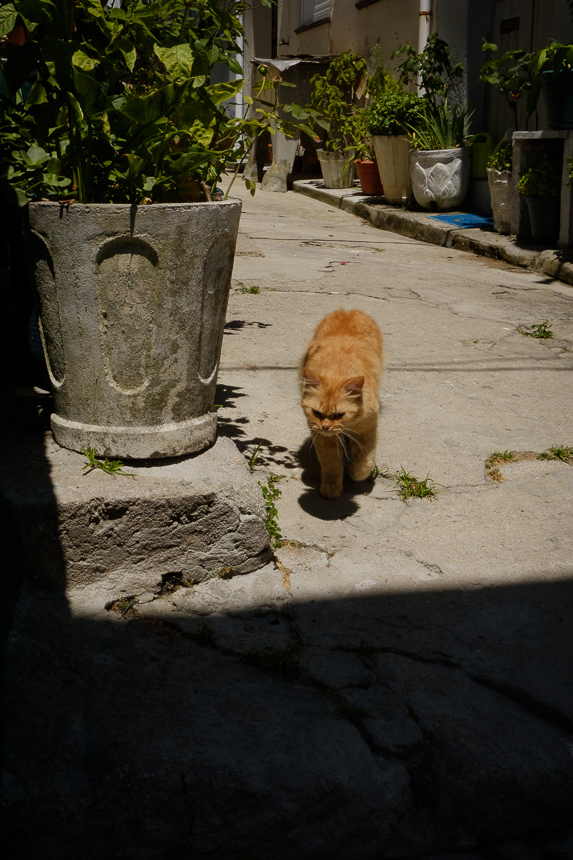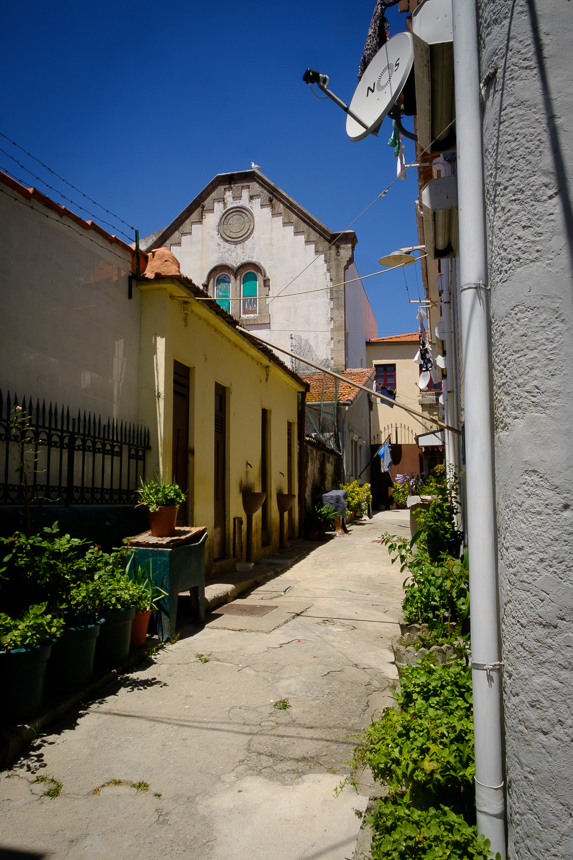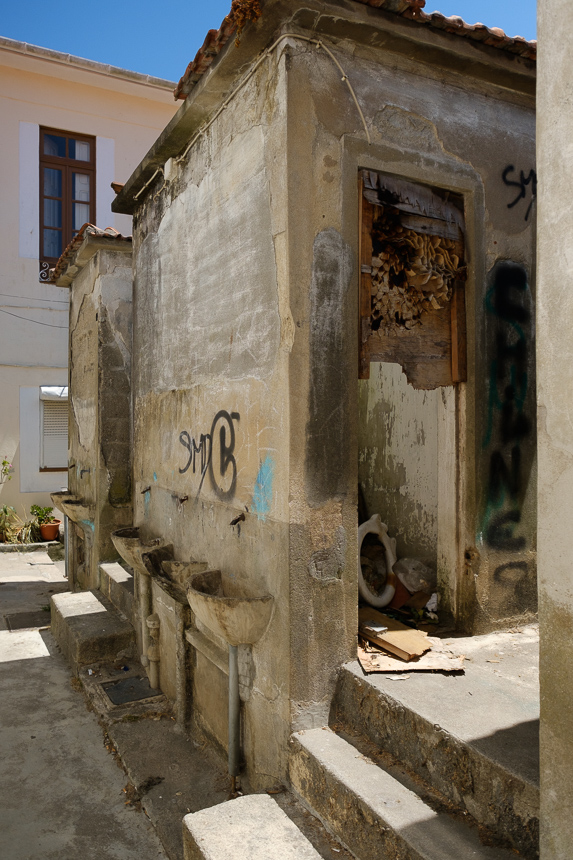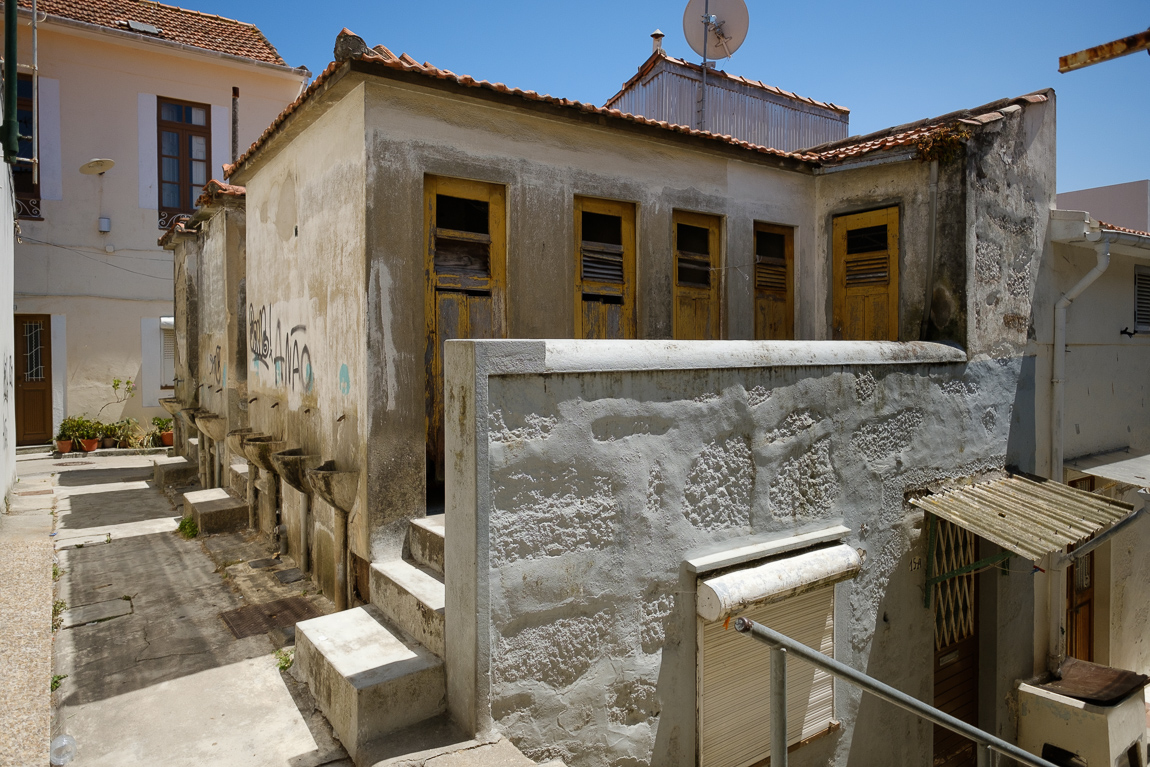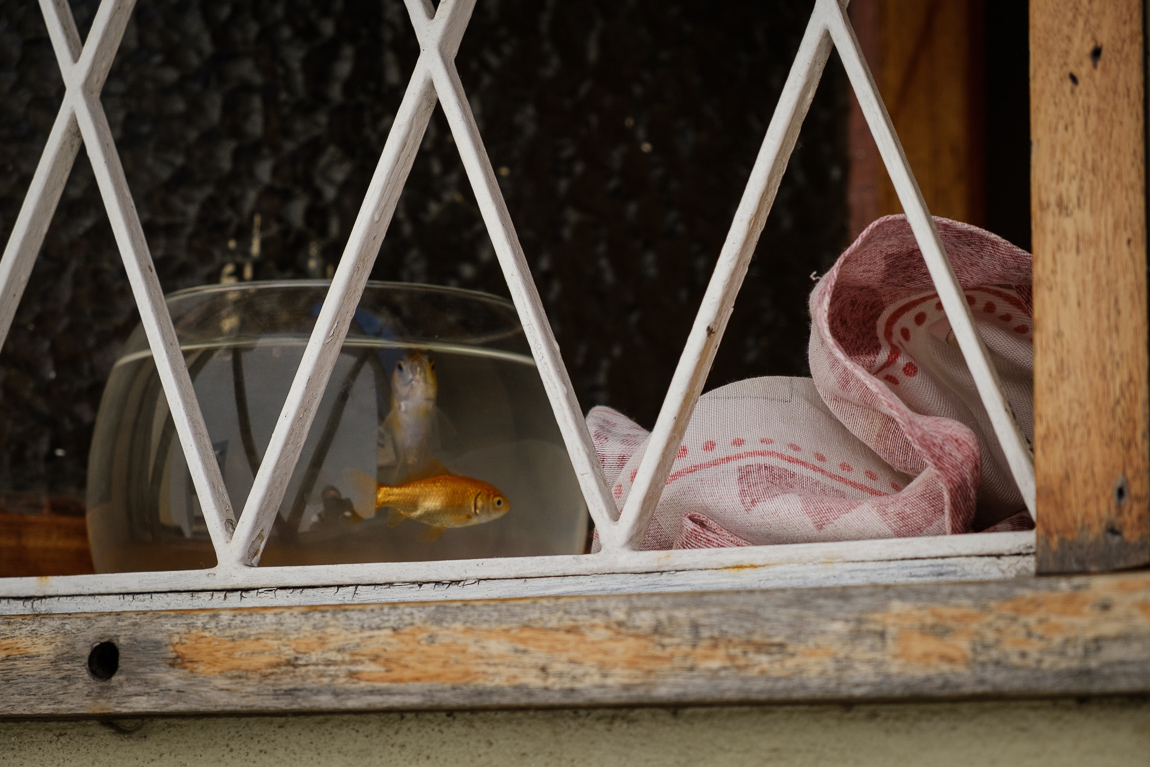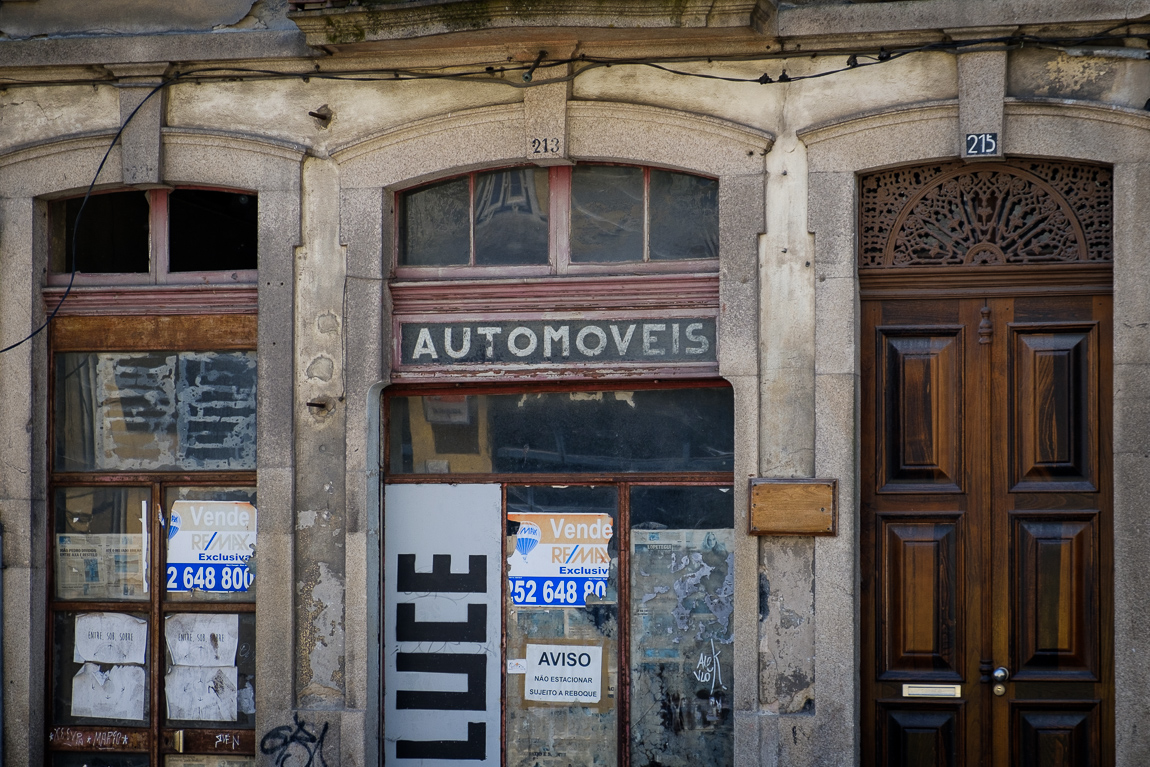While Lisbon is generally treated as the city of government and arts, Porto has always been a working class city, an industrial city. In many quarters you therefore won’t find represantative buildings, but the flats and houses of the working part of the citizens.
East of the centre of Porto, outside the city walls and wide outside the tourist areas you can still find working class quarters from the 19th century, which haven’t been destroyed by new buildings and which are still inhabited by the working class people of the city, workers and retired people with only small incomes.
In Fontaínhas, close to the cemitery from Cimetério do Prado do Repouso covered in the previous post, lies the Rua do São Victor, better knwon as Rua das Ilhas – street of the islands. Islands are a special thing of Porto: small narrow alleyways left and right of the main street, along which small houses are lined up. The alleyways are usually separated from the road by a small door, quite often a door in a larger house facing the road. The houses along the alleyways have one or two levels, most of them are only 20 to 30 squaremeters in total. Inside you find the living room and a small bedroom, usually not very much larger than the bed in it. In the second floor there is a storage room. Bath and kitchen were added later and are in small side rooms, sometimes only divided by a curtain from the living room and from each other. Some houses even only have a small stove outside instead of an own kitchen.
Those ilhas were created in the second half of the 19th century to house the growing population of the city, which was attracted by the growing industry. Since then not much has changes, own bathrooms and kitchens were added relatively late to the Ilhas. A long time the inhabitants used communitary bathrooms and kitchens. A lot of the ilhas are lying behind larger houses of the factory owners and other richer inhabitants of Porto. They are Portos backyard settlements.
Daily life happens on the street, here children play, old people have a chat and adults relax from work. TV sets are placed in the windows or radios are blasting into the road. The ilhas form a community, like a small village inside the big city. All your life is happening in close proximity to your neighbours, making the Ilha some kind of extended family.
Even today most houses are inhabited by families, but the younger people tend to move into more comfortable flats in suburbia, only the old people remain. Same here as anywhere in similar areas and in the historic centers: the comfort of a new flat is preferred to living in a traditional house (especially when you don’t have the money to renovate the old houses).
As a tourist, it is usually a nice idea to ask the persons living in the ilha if you can enter, you are definitely invading their private space. Most often it is no problem at all, if you are lucky you are even invited to somebodies house and have a nice chat. When I was there, an elderly lady showed me her Ilha and her small house. She has been living there over 70 years. Her children moved to some suburb, but she never wants to leave her Ilha…
In the Rua Alexandre Herculano you can find another quarter, which was built around 1870 and offered a bit better conditions as the Ilhas: the bairro Herculano. The entrance is a it hidden, a small sideroad which leads to a trafo-station of the EDP and if there weren’t some decorations of the last São João hanging there wouldn’t be very welcoming. Originally this entrance and the second entrance at the Rua das Fontaínhas had iron gates, which could close the access to the bairro.
The Bairro Herculano is arranged in squares, small streets separate 8 to 10 blocks of houses. Those blocks are formed from two-level houses, which are decorated with lots of flowers and birdcages. From the first floor clothing is hanging to dry, which gives shadow during the hot midday sun. Also here the houses are small, but the bairro featured two small grocery shops, a community garden and a small chapel. Garden and shops are long gone since, but the outside walls of the chapel are still visible as they were integrated into a house which is now at the place of the chapel.
Directly next to the chapel and at a second block you can still find the communal bathrooms and toilets. They are falling down and in a very desolate state, as now all houses have their own toilets. For todays standards it sounds like not the best living conditions, but for a workers quarter in the 19th century the Bairro Herculano was very advanced and had much better living conditions (and hygienical conditions) than it was usual at that time.
The Rua das Ilhas and the Bairro Herculano are two of the few remaining places, where the yearly São João Festival is still a traditional saints-festival and not just a great party. If you are around at that time, be sure to pass by these quarters.
